One of the most interesting drawings in the posthumous sale of the collection of art critic Brian Sewell at Christie’s on 27 September 2016 was a previously unpublished preparatory study of the Schmadribach Waterfall near Lauterbrunnen by the Austrian painter Joseph Anton Koch (1768–1839). The sketch realised £68,750. Judged to be of outstanding significance as an important early Romantic view of Switzerland, the work was subject to a temporary export bar, and has recently been purchased by the British Museum.
Born in the Tyrol, Koch rebelled against the conventional artistic training he received at Stuttgart and spent three years sketching scenery in Switzerland. At Neuchâtel, he met the English clergyman Dr George Nott, who provided him with funds to visit Italy. Koch became a leading member of the colony of northern artists in Rome and remained there for most of his career. Defining form with great detail and accuracy, and preferring more rugged mountainous terrain to traditional Claudian scenery, he reinvigorated the classical landscape.
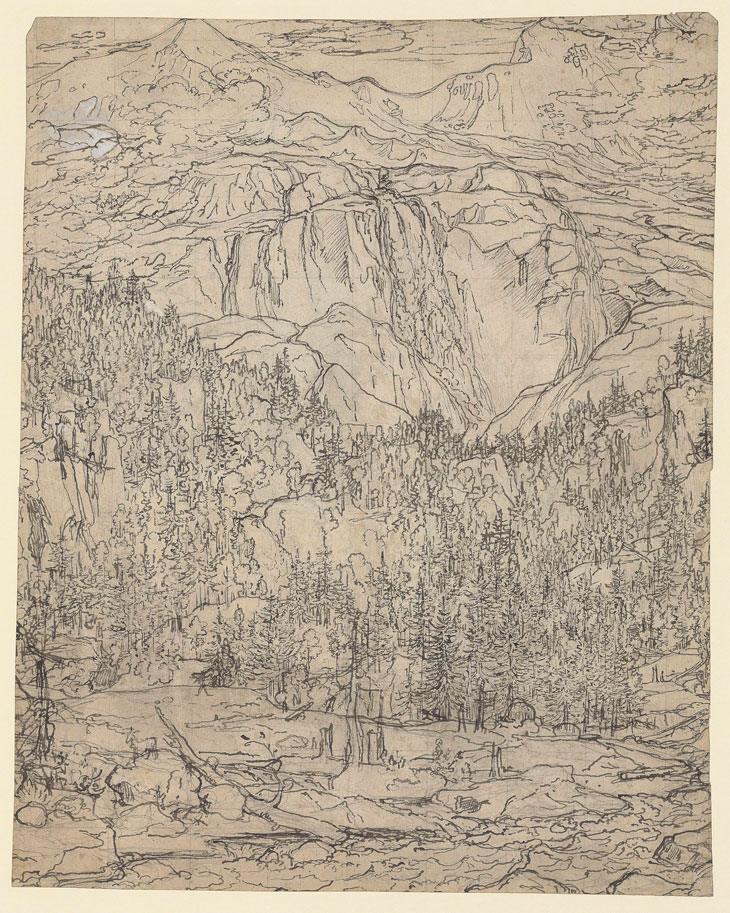
The Schmadribach Waterfall above Lauterbrunnen (c. 1793), Joseph Anton Koch. Purchased by the British Museum with the assistance of The Art Fund, the American Friends of the British Museum, the Tavolozza Foundation, Charles Booth-Clibborn, the Wakefield Trust and the Ottley Group
The Schmadribach waterfall, depicted in Koch’s sketch from the north, between the Grosshorn and the Lautenbrunner Breithorn mountains, is one of the most spectacular of the cascades which made the Bernese Oberland a destination for such visitors as Goethe, Wordsworth (who recalled his visit of 1790 in book six of The Prelude) and Turner. In this precise preparatory study Koch depicted two natural processes: erosion, where the torrent tumbles over the cliff; and the water cycle itself, from cloud to snow to river. He probably began with a now-lost preliminary study made on the spot in 1793, which he traced on a fresh sheet, and then over-drew in black chalk heightened with ink. The artist squared off the design for transfer, to serve as the basis for a watercolour (now in the Kunstmuseum Basel) and a sepia drawing with an added figure-group of the ‘Judgement of Paris’ (now in a private collection in Lübeck). He later painted two larger oil versions of this composition, in 1805/11 and 1821/22, which are in the Museum der bildenden Künst in Leipzig and the Neue Pinakothek in Munich.
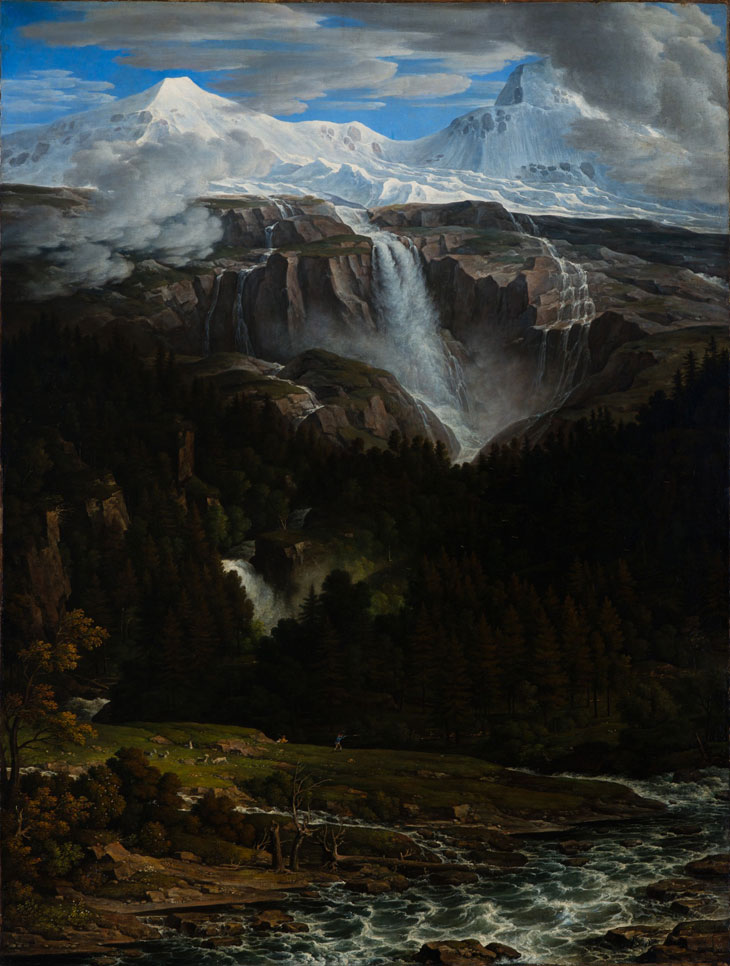
Schmadribachfall im Lauterbrunner Tal (1811), Joseph Anton Koch. Museum der bildenden Künste Leipzig
Koch was familiar with Immanuel Kant’s theory of the ‘mathematical sublime’, exemplified by sights too boundless for the imagination to grasp. He may also have been inspired by the spectacular panoramic landscape of Albrecht Altdorfer’s Battle of Alexander, painted in 1529 for the Duke of Bavaria and now at the Alte Pinakothek in Munich. Characterising the mountains as a source of natural change and regeneration, Koch invites the viewer both to measure and also be overwhelmed by the vastness of nature. His interpretation of Swiss landscape proved more influential than that of Caspar David Friedrich on the next generation of German painters, such as Ludwig Richter. Koch’s work also proved to be especially popular with British collectors. In 1802 he told a friend that his recent work had mostly been sent to England, and in 1812 boasted that ‘I can take work to England, where I have many acquaintances and a reputation through my friend George Nott in Oxford, who sent me to Italy and supported me there for three years, and bought many of my drawings. If I could take oil paintings there I would have no financial worries.’
Other British patrons included Frederick Augustus Hervey, the ‘Earl Bishop’ of Bristol and Derry, William Moyneux, 2nd Earl of Sefton, Lord Bute’s son James Archibald Mackenzie, and perhaps also William Pitt the younger. Regrettably few of Koch’s works are in British public collections: two landscape watercolours with scenes from Macbeth and William Tell and a sepia landscape (Rinaldo’s departure from Armida) may be found at the Hunterian Art Gallery, Glasgow; the Walker Art Gallery, Liverpool; and Walmer Castle in Kent. Meanwhile, four sketches of Italian scenery are in the Ashmolean Museum, Oxford. But after Nott’s death his collection was dispersed and his 40 drawings by Koch of subjects from Dante’s Divine Comedy passed to the Dresden Print Room, where they were tragically lost in the air raid of February 1945.
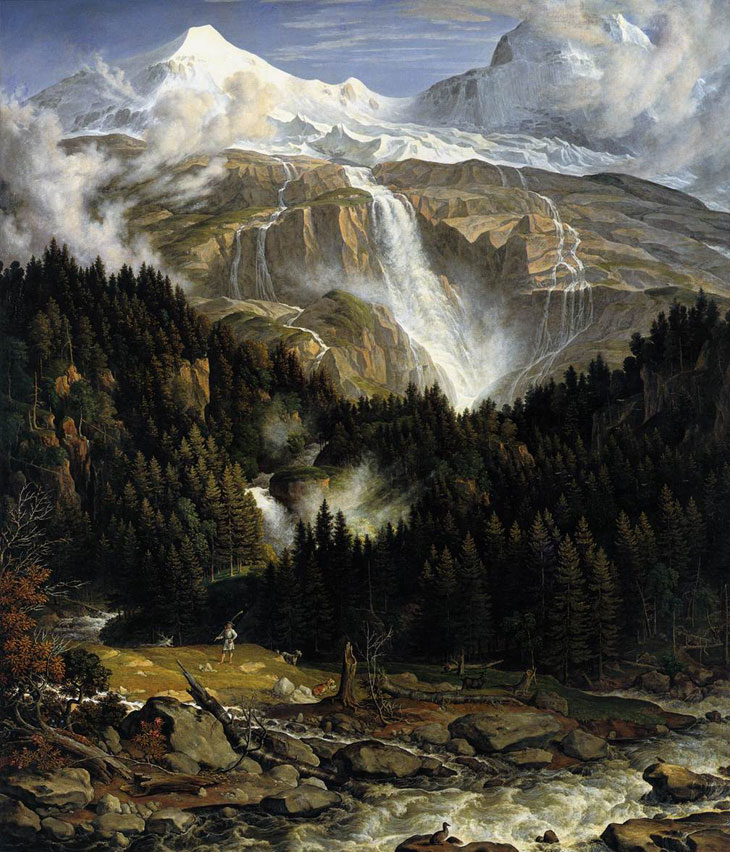
The Schmadribach Falls (1821/22), Joseph Anton Koch. Neue Pinakothek, Munich
Five drawings by Koch belonged to the close friend of John Ruskin, Sir Henry Acland professor of medicine at Oxford and co-founder of its University Museum, which opened in 1861. Acland’s interest may elucidate the striking similarities which may be noticed between Koch’s Alpine scenes and that distinctly Ruskinian landscape, John Brett’s Val d’Aosta, which was painted in 1858 under the art critic’s supervision and purchased by him.
Unlimited access from just $16 every 3 months
Subscribe to get unlimited and exclusive access to the top art stories, interviews and exhibition reviews.

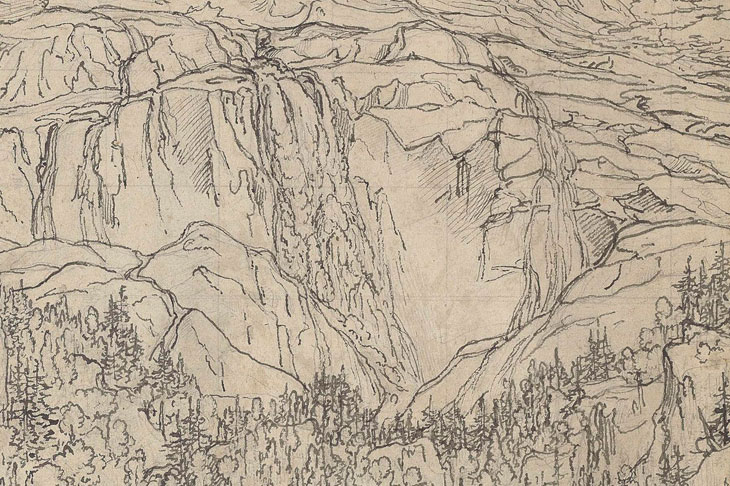
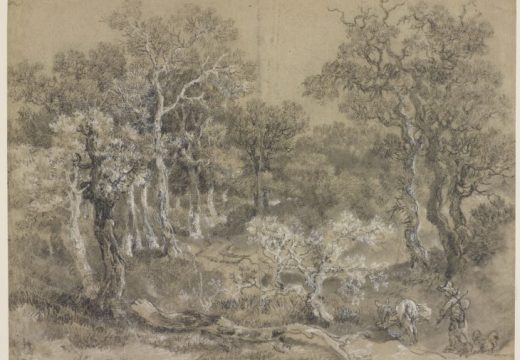
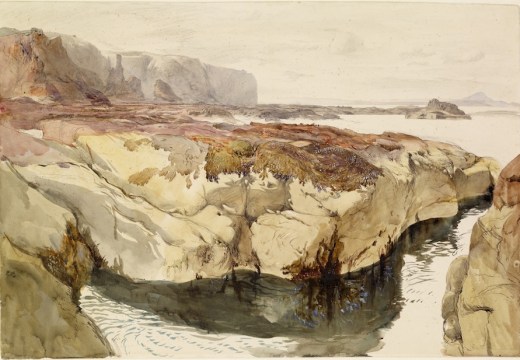
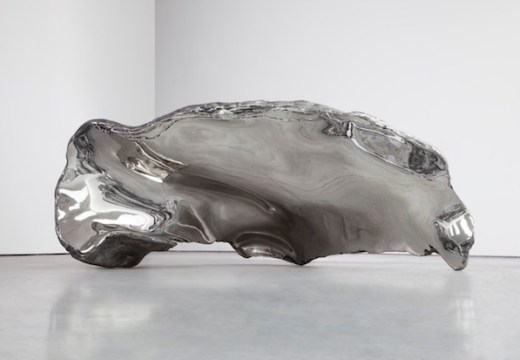









![Masterpiece [Re]discovery 2022. Photo: Ben Fisher Photography, courtesy of Masterpiece London](http://www.apollo-magazine.com/wp-content/uploads/2022/07/MPL2022_4263.jpg)
Why are fathers so absent from art history?